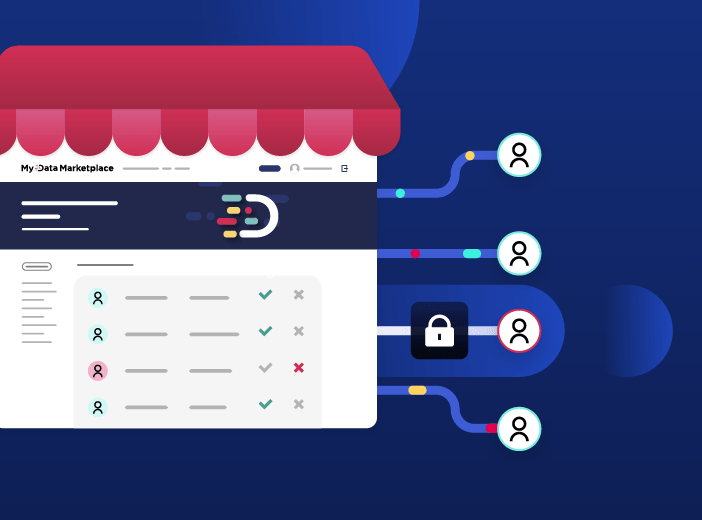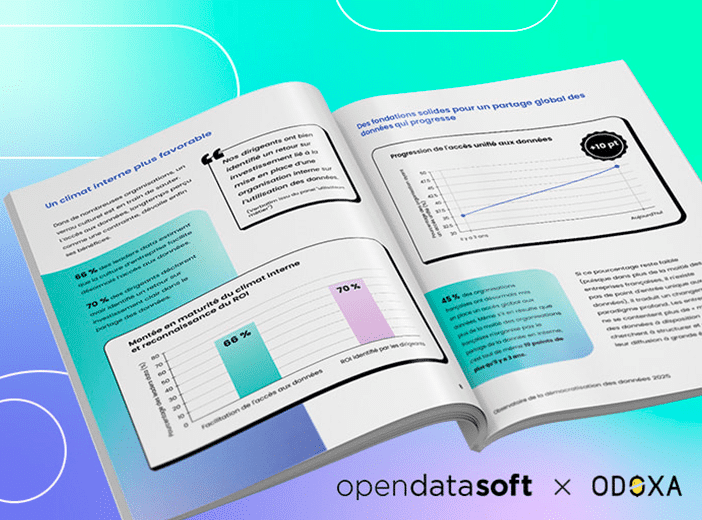Glossary
Open data
Open data is data which is shared, openly accessible and exploitable for any purpose by everyone (including companies, citizens, media, or consumers). This data can be shared by public institutions and municipalities or by private sector companies.
In a data-driven world, access to the right information is a necessity for citizens, employees and consumers in their work and daily lives. Organizations therefore need to share their data effectively, through open data programs. What is open data? How do you open your data? What are the benefits?
Open data: definition
Open data is data which is openly accessible to everyone (including companies, citizens, the media, and consumers). It can come from public institutions and local authorities. Increasingly businesses are also launching open data initiatives. An example is French bank BPCE Group which publishes job vacancies and the location of all its branches on its open data portal.
Open datasets can include information on performance, progress against objectives, mobility, culture, commerce, finance, public policy, and urban planning.
More broadly, the concept of open data refers to the process of making any kind of data available to the general public. The goal is therefore to offer simplified access to data so that everyone can consume it like any other content (such as photos or videos), driving data democratization.
It is therefore necessary to make a distinction between public data (which refers to all information which is freely available) and open data, which is a subset of public data. Open data is better structured and more understandable to users. These are its main features:
- Free access: everyone can use it. This can be done without any barriers (technical, legal or financial).
- Availability: to guarantee accessibility, this data is stored on open data portals or apps.
- Data reuse: there are various tools (such as APIs, Iframe, widgets and file downloads) which allow third parties to reuse published data.
- Data quality: open data must be of the highest quality. In order to do this, institutions must be certified to publish their information as open data. This license is known as the ODC-ODBL (open database) license.
What are the benefits of open data?
Enabling data-driven decisions
Open data is a valuable decision-making tool for organizations. Accessing open data allows organizations to bring together multiple datasets on a large scale from external (and not just internal) sources.
By analyzing greater volumes and different datasets people can take better, more informed decisions in their working and daily lives. Open data therefore helps organizations become more data-driven, flexible and agile.
Enhancing transparency
Citizens and consumers all now have greater demands for knowledge about the activities of the public and private sector institutions they deal with. Transparency is key, whether it is a municipality providing information on its budget or a consumer goods company showing progress towards its sustainability goals. Before committing to a brand (when buying a product or deciding to become an employee), consumers want to know the values behind the brand and the activities it is involved in. Essentially, all organizations have to report on their efforts to respond to major societal challenges.
Open data makes this possible. It helps organizations to build relationships of trust with their audience, thereby improving their image. Organizations can use data to report about issues such as their environmental impact, the quality of their services, or diversity in their workforce, for example.
Developing new services
Open data can be used or reused by anyone. This means that public institutions, private organizations and members of civil society can use the data flows made available to them.
By using open data, organizations can easily create new services to meet the needs of their customers and improve collaboration within their ecosystem. This could be to increase revenues or to meet wider societal goals, such as sustainability and decarbonization.
Building an attractive brand image
Publishing open data in interesting, eye-catching ways, such as through compelling data visualizations reinforces a strong brand image. These visualizations, based on open data, can be shared via websites, apps and social media. By demonstrating the success of projects it shows that an organizations is innovative and purpose-driven, helping attract both customers and staff.
Creating a data-driven organization
Sharing open data internally requires organizations to provide quality information that is understandable and ready to use without requiring specialist data skills. By making data available everywhere, it impacts all departments in the organization, enhancing collaboration and transforming operations and performance.
At the same time, this allows employees to participate more actively in achieving the company’s goals, which also helps unite teams and to promote a data-driven culture.
Responding to regulatory requirements
Both public and private sector organizations have to meet growing regulatory requirements around their activities. Public sector bodies are mandated to report on their performance, utilities need to share information on emissions, while other businesses need to respond to regulations around diversity, CSR and sustainability.
By making this information available through open data citizens and consumers can better monitor the organizations that they deal with, increasing openness and confidence in public and private institutions.
Learn more

Everything you need to know on data products for business users
It can be hard to understand exactly what a data product is, given the many ways that the term is defined and applied. To provide clarity this article provides a business-focused definition of a data product, centered on how it makes data accessible and usable by the wider organization, while creating long-term business value.


